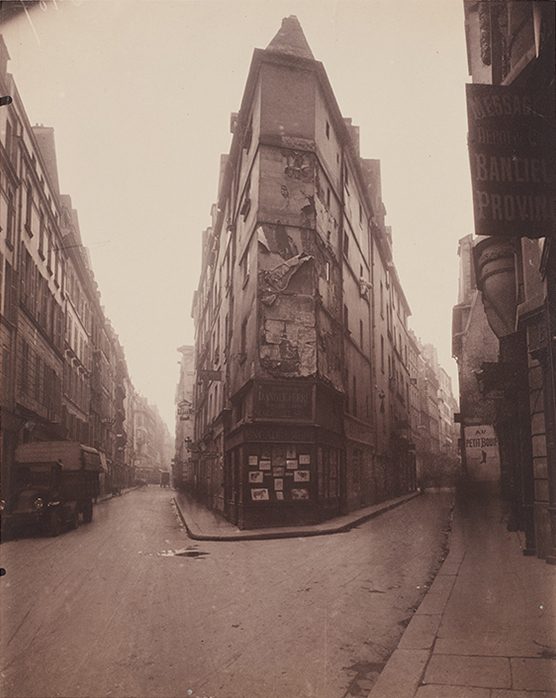
JULY 1–SEPTEMBER 23, 2018
EUGÈNE ATGET
FRENCH, 1857–1927
Eugène Atget
French, 1857–1927
Corner of rue de Seine and rue de l'Échaudé
c. 1919
Arrowroot print
Clark Art Institute, 1998.39.1
Throughout his thirty-year career, Eugène Atget used cumbersome late nineteenth-century equipment—an 18 x 24 cm view camera mounted on a wooden tripod—to photograph the streets of Paris. Beginning in the 1890s, Atget methodically recorded the city’s seemingly infinite variety of architectural spaces and ornaments, making more than 8,500 glass-plate negatives. Thought to be self-taught, Atget worked primarily in the diffuse morning light, which imbued his images of storefronts, townhouses, courtyards, and parks with an expressive sense of atmosphere. A sign in the window of his Montparnasse studio advertised “documents for artists,” or photographic aids intended to enhance the work of painters, sculptors, metalsmiths, architects, and set designers.
Atget organized his prodigious archive of negatives according to subject matter, rather than date or location, perhaps with his artisan client base in mind. Drawing upon categories such as Picturesque Paris, Art in Old Paris, Landscapes, and Interiors, Atget printed and sold thematic albums to individuals and institutions, including the Bibliothèque Nationale, the École des Beaux-Arts, the Musée Carnavalet, and the Victoria and Albert Museum in London. Atget remained little known beyond Paris until a circle of young expatriate artists associated with Surrealism—namely, American photographers Man Ray and Berenice Abbott—encountered his work. Shortly before Atget’s death in 1927, Abbott met the photographer and purchased the remaining contents of his estate, which included more than a thousand negatives and thousands of prints. Abbott, whose work documented the built fabric of New York City, championed Atget’s views of Paris as “realism unadorned.” For decades, she promoted Atget’s photographs to international audiences through publications and exhibitions, preserving the artistic legacy of the modest “author-producer” who never referred to himself as a photographer.

